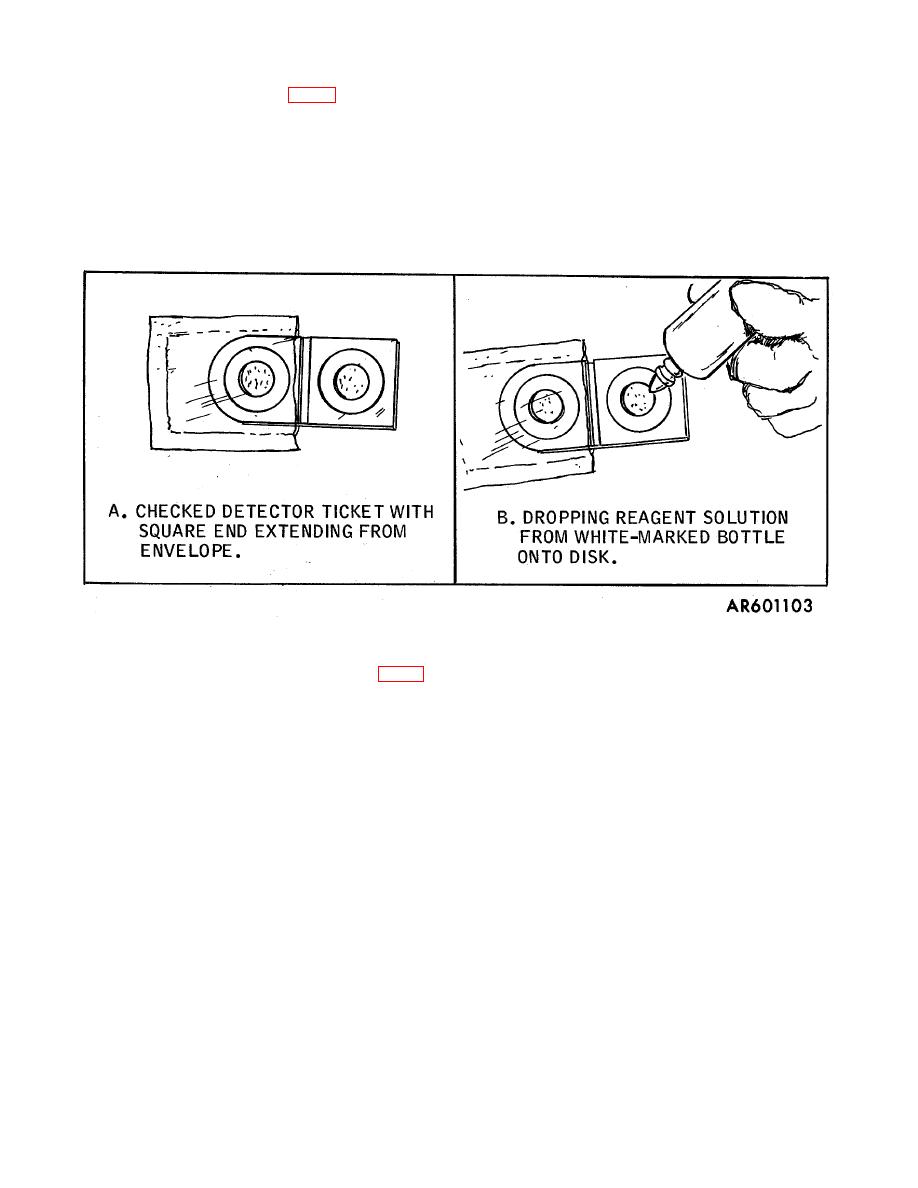
TM 3-6665-254-12
c. Preparing Ticket for Use (fig. 8). The ticket is prepared for use just prior to going into a contaminated area, or
while in a contaminated area.
(1) Detach a plastic envelope containing a detector ticket from the belt of tickets.
(2) Tear the envelope approximately one-half inch from the top of the round end of the ticket. The existing
notch or small slash in the envelope will assist in this tear.
(3) Reverse the ticket in the envelope until the square end is out of the envelope (A).
(4) Add two drops of reagent from the white- marked bottle onto the disk in the square end (B). If the disk
does not wet easily, reinsert the ticket into the envelope and massage the square end of the ticket until the disk is
uniformly wet.
Figure 8. Preparing ticket for use.
d.
Collecting and Testing Vapor Samples (fig. 9).
(1) Install the square end of a prepared detector ticket in the aspirator bulb adapter with the plastic cross
support behind the disk facing toward the bulb (A).
(2) Direct the ticket toward the ground (B) and compress the bulb sixty times. Allow the bulb to reinflate
completely between compressions.
(3) Withdraw the ticket from the aspirator bulb adapter and insert the round end of the ticket into the envelope
(C) so that the square end still is not covered by the plastic (C).
(4) Carefully add two drops of substrate solution onto the disk at the square end of the ticket (D). Push the
ticket all the way into the envelope. Massage the ticket in the envelope.
(5) Observe the color of the disk in the square end of the detector ticket. Indication will appear within 3
minutes.
(a) If the disk is white or light red- orange, V- or G-agent, or a combination of V- and G-agent is present
in the atmosphere.
(b) If the disk is blue, no V- or G-agent is present in the atmosphere.
(c) If most of the disk is white or light red-orange, with a fringe of blue, very low concentrations of V or G
agents are present.
4-4

